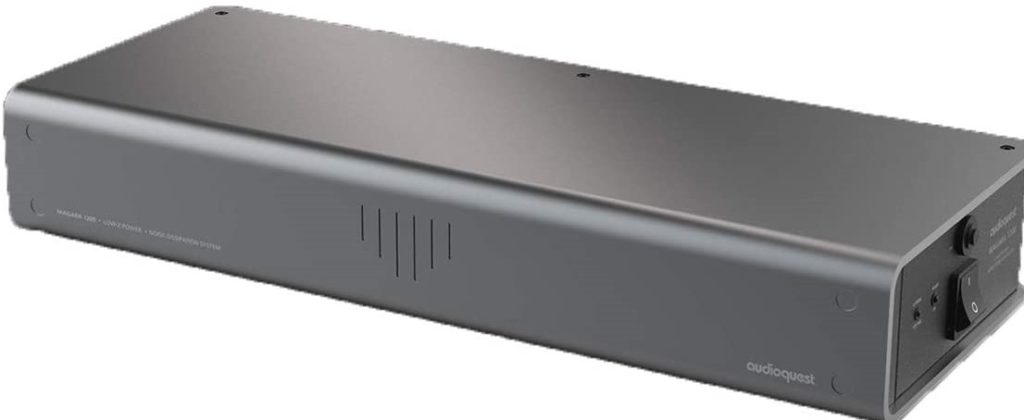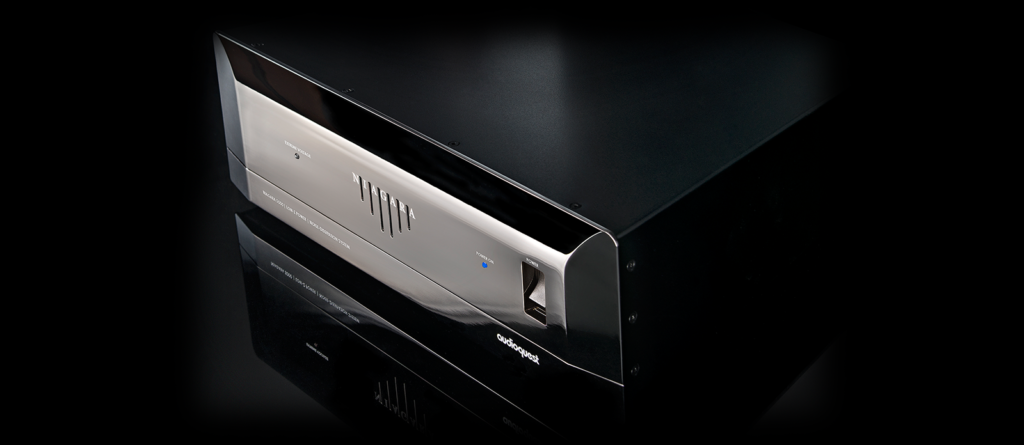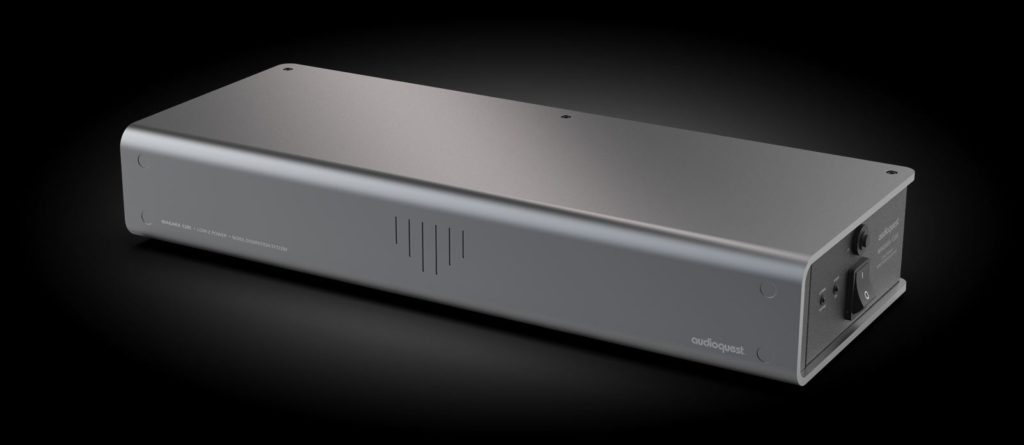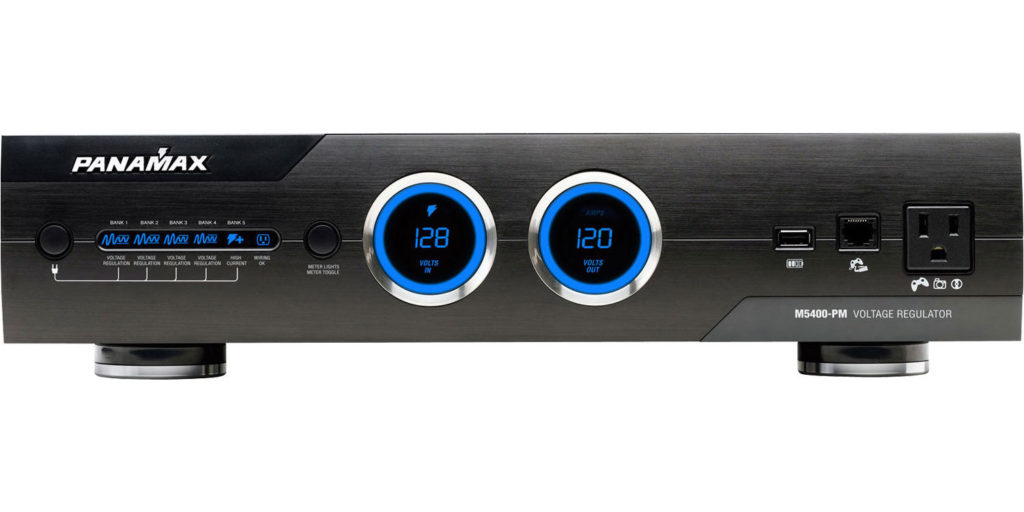BecomeSingers is reader-supported. When you buy through links on our site, we may earn an affiliate commission. Learn More
Home theatres are a huge investment that requires you to do proper research before buying one. With the overload of information on the internet, you might find getting a comprehensive list of sound systems difficult. We have done the work for you and compiled a detailed guide on different categories and types of sound systems. But before that, you must be equipped with the necessary information to gauge which system best suits your requirements.
Table of Contents
What are home theatre power managers?

A power conditioner is a must-have if you want to get the most out of your home theatre system. By protecting your expensive equipment from harmful power surges and enhancing your audio quality, a power conditioner can easily turn your home theatre setup into a state-of-the-art cinematic experience. Let’s have a look at the 10 best power conditioners on the market right now.
As the title suggests, a home theatre power manager deals with the power supply to your home theatre system. It evens out the AC power distribution and filters dirty power. The home theatre power manager also protects against a power surge.
Today, a home theatre power manager comes with a lot of additional functions. It can be equipped with functions like over or under-voltage protection. Features like sequential system power On/Off are also common. Of course, it depends on the price you’re willing to pay for a power conditioner.
The function of a home theatre power manager is twofold. It simultaneously enhances the performance of your home theatre and protects it against power surges and noise.
You don’t need to worry about the aesthetics of owning a power conditioner. It comes in a well-organised system – the cables are hidden behind the home theatre power manager. Instead of worrying about multiple cables, you get a single device.
Is a home theatre power manager required?

The major role of a home theatre power manager is to protect your device from sudden surges in electricity. But do you need to invest in one?
Here’s the thing: home theatre power managers greatly improve the performance of your home theatre. They become indispensable in regions with frequent load shedding or lightning strikes.
One of the biggest challenges when it comes to home theatre failure is dirty power. Dirty power refers to any anomaly in the quality of the power. This may include any power surge that hits your home theatre system.
How to identify if your appliances are prone to dirty power? Here’s a list –
- Sudden power surges
- Variations in voltage
- Variations in frequency
A power surge or power cut can frequently lead to spikes in power quality. In such cases, the home theatre is flooded with electricity. It can also lead to fluctuations caused by variations in voltage and frequency.
The home theatre manager will stop these fluctuations and ensure that your home theatre gets a steady electricity supply. Any form of variation can adversely affect the audio equipment of your home theatre.
Another reason why the home theatre power manager becomes necessary is noise. The home theatre speakers may produce white noise when dirty power surges through them. A power conditioner will cancel out this effect and ensure the smooth functioning of the home theatre.
It is prudent to invest in a home theatre power manager before your appliance is affected by dirty power. The home theatre power manager will increase the efficiency of your device and extend its lifespan, making it a win-win situation for the long term.
What is the difference between power conditioning and surge protection?
Let’s first understand what a power conditioner does for your device. A power conditioner manages the quality of electricity at your house. The power conditioner helps manage the voltage and amperage running in your appliances when you plug it in.
A power conditioner essentially diverts the dirty power and protects your device. It is an important part of the home theatre power manager. On the other hand, surge protection stops power surges from getting to your device. How does this happen? The surge protector automatically disconnects your device when it senses a power surge.
A home theatre power manager works similarly. Some might say it is much safer than a surge protector. This is because a home theatre power manager uses EVS technology. EVS stands for Extreme Voltage Shutdown. It will physically disconnect your appliance in the wake of a power surge or dirty power.
The difference between these two also lies in the price. A surge protector is usually cheaper than a power conditioner. Additionally, a power conditioner comes with filters to reduce noise and provide cleaner energy for your home theatres.
The latter, however, is a more efficient and safer option for domestic households. Power conditioners provide a better safety net for the long run.
Things to consider when buying a home theatre power manager or power conditioner
You’ve decided that you want a home theatre power manager. But what are things you need to consider before buying one? The internet is flooded with too many brands, and it can be daunting to buy a power manager if you’re a first-timer who has never bought one before.
Here’s a guide to help you make better purchase decisions regarding home theatre power managers:

- Size of the power manager: The size of a home theatre power manager is an important parameter. The size often depends on the number of outlets a power manager has. This means that the more outlets your power manager has, the bigger it will be.
- Note the size: By keeping a note of the size, you can make the installation process easier. Certain home theatre power managers are kept under the television set. Others are mounted on walls or shelves. The size helps you decide exactly where the power manager will be installed in your house.
- The number of outlets: You need to take note of the number of outlets you require before buying a home theatre power manager. This includes any extras that you will need for the future. Why? Well, every appliance comes with a different plug size. The various sizes require different outlets. By making sure that you have ample outlets, you can be adequately prepared.
Most home theatre power managers in the market have an even number of outlets. The number can range anywhere from six to twelve. When choosing a power manager, you need to keep the number of outlets in mind.

- Power cord: A long power cord is a must for home theatre power managers. This is because a long cord helps to filter the dirty power effectively. It also gives ample area for the installation process. The power cord must be foolproof, reliable, and light to work efficiently.
- Absorption rate: The home theatre power manager must have 500 joules at the very least. This is the absorption rate of the power manager. It refers to the quantity of power that the home theatre power manager can handle.
- UL certification: Underwriters Laboratories provides certification for home theatre power managers. This lends credibility to your power manager. However, there are power managers without the UL certificate that are equally reliable.
- Voltage: Voltage or clamping voltage, to be precise, equals the rated voltage when the power manager is switched on. Ideally, the home theatre power manager should have a voltage rating between 120 to 400. This will ensure that your house and devices are well-protected against any voltage fluctuation.
- Surge protection: Surge protection in addition to a power conditioner? That’s a power-packed combination. Look for home theatre power managers that come with surge protection. This will improve the longevity of your home theatre.
We also have a guide on How To Set Up A Karaoke System With A Laptop to help you with all your system needs.
Frequently asked questions about home theatre power managers
How much do power conditioners cost?
Home theatre power managers can be priced anywhere between $100 and $500 or more. The budget ones don’t have as much flexibility. Nevertheless, they help to protect your home theatre system.
How long will a power manager last?
A good, high-end home theatre power manager will last three years to more than a decade. The best home theatre power manager comes with a warranty period of at least three to five years. Therefore, the lifespan of a power manager depends entirely on the user.
Are UPS and power conditioners the same?
Not at all. UPS is short for Uninterruptible Power Supply and has a backup battery. It gives you extra time to turn off your appliances during power cuts. A power conditioner has a more protective and preventive function. It protects your appliances and prevents device failure due to power surges.
Can I plug in all the studio components into the power manager?
Yes, you can. If there are noise issues and you cannot detect the source, you can easily plug the studio components into the power manager.
Can the power conditioner be plugged into a surge protector?
Well, technically, yes, you can do that. The power conditioner and surge protector can be daisy-chained. But there’s no point in doing that, as most power conditioners come with a pre-installed surge protection system.
You can do that if you have too many devices. However, remember not to exceed the maximum power that the outlet in your building can provide. The power conditioner and the surge protector will be attached to two different walls in an ideal situation. Furthermore, these outlets will be installed on two separate breakers.
10 best home theatre power managers in 2022
Home theatres and power managers are big investments requiring you to compare different prices, features, noise filtration, current rating, and performance. After comparing the different power conditioners available in the market, we have prepared this all-inclusive list of the ten best home theatre power managers that give the best performance.
Panamax MX5102 home theatre with battery backup
Loaded with features, the Panamax MX5102 Home Theatre Power Management with Battery Backup screams premium. It has ten rear panel outlets, out of which two are backed up with a 600 VA UPS that will be useful during a power outage. This home theatre power manager scored high on all three fronts: surge protection, battery backup, and power management.
The battery backup helps retain the setup configuration of critical equipment and minimises the risk of hard-disk crashes. Another impressive feature includes shutting off projection equipment through IR control so that the projector bulbs can undergo a proper cool-down cycle before shutting off. The device is bolstered with Level 3 Power Cleaning and Linear Filtration, gets rid of common symptoms of contaminated power, and makes your A/V equipment perform optimally.
The AVM circuitry continuously checks the incoming power displayed on the digital voltmeter. When there is an under-voltage or an overvoltage, a red LED is flashed on the front panel, and power to the connected equipment is turned off for all outlets except for the battery-connected ones. When the voltage stabilises to a safe level, power to the equipment is automatically reconnected.
Thus, this is one of the best options for a premium home theatre power manager but is expensive due to its features and power-packed performance.
Panamax MR4300 power manager
The Panamax MR4300 comes with nine outlets that provide good protection and filtration to your home theatre. This device is heavy on features with Automatic Voltage Monitoring (AVM) and Protect or Disconnect Technology.
Other features include Linear Level 3 Filtration (2 Total Isolated banks) with Dedicated High Current Outlet Bank (4 Outlets), Antenna, LAN, and TELCO signal protection. One thing that separates it from the rest of the power managers on offer is the Rotating and Dimmable Media Lights to illuminate the equipment. The device’s disadvantage would be its limited noise filtration and vulnerability to radio interference.
This home theatre power manager delivers high on both performance and features. If you are comfortable with a bit of noise, this can be your go-to choice for power conditioners.
Niagara 5000 power manager
A bit on the heavy side, Niagara 5000 Power Manager creates very little noise with its AC Ground-Noise Dissipation system. This home theatre power manager is adept at filtering out power line noise. It rates below 30 on the power line noise metre.
Other features include the widest bandwidth-linearized AC filter in the industry and a distinctive passive/active transient power correction circuit. The device includes a current reservoir of over 90 amps peak. Unlike most other AC power products featuring “high-current outlets” that only minimise current compression, this home theatre power manager corrects it.
The rear panel of this power conditioner comes with four high current outlets and another eight ultra-linear outlets. The Niagara 5000 has built-in surge suppression for protection that has been tested with 6000V/3000 Amp surges.
This device is expensive due to its features and may not be a popular choice among those functioning on a limited budget.
Furman PL-8C power manager
Furman PL-8C Power Manager is light on your pocket and provides great value for its price. It comes with a surge suppressor and an AC filter with eight back-panel outlets and one front outlet. It has a built-in circuit breaker with a 15 amp rating.
With its Series Mode Protection, the power conditioner absorbs and dissipates damaging transient voltages without harming the unit.
To eliminate AC line noise and stop leakage, the device features a linear filtering technology.
It has a breaker switch on the front panel that can be used to switch off all connected devices. This is an entry-level product hence lacks premium features but provides good surge protection.
ROOTOMA Surge Protector
ROOTOMA Surge Protector sports six AC outlets, a 6-feet surge protector power strip, and six separate switches with indicator lights. These separate switches provide great flexibility in areas where plugged and unplugged power cords would be a hassle. Designed for convenience, this device is mountable on the wall and comes with hanging slots and slip-proof rubber feet.
This surge protector comes with an ETL-approved extension cord that provides better surge and overload protection and fireproof function. This one is a safe choice for your appliances.
AudioQuest Niagara 1200
A monster when it comes to performance, the AudioQuest Niagara 1200 comes with seven outlets on the back. There are two high-current outlets (connecting amps, powered speakers, subwoofers). It also has five linear-filtered outlets for connecting PCs, DVD/Blu-ray players, TVs, etc. These outlets are loaded with features and sport AudioQuest’s Ground Noise-Dissipation System. They also come equipped with ultra-linear filtering capacitors.
The Niagara 1200 has an ultra-low resistance solid-core wiring optimised for low-noise directionality making it stand out with its quiet functioning. This home theatre power manager sports a minimalistic design and 15A fuse circuit breaker. Disadvantages of this device can include its lack of current and voltage monitors, cable, and phone/LAN inputs and outputs.
The power conditioner has non-sacrificial surge protection to safeguard your system from AC surges and spikes, patented Ground-Noise Dissipation technology, and over-voltage shutdown. Overall, this feature-loaded system is among the most powerful performers that provide the best value for money.
Panamax M8-AV-PRO Hi-Definition 8 outlet surge protector
This provides all-around protection to your home theatre system from even those electrical surges that travel over antenna lines, cable, phone lines, and satellite cable. In the case of lightning, the protect/disconnect circuitry completely disconnects AC power to connected equipment. It is portable and comes with a 12-volt trigger that allows source equipment to activate or deactivate 4 of 8 outlets.
This home theatre power manager’s USP lies in its premium quality surge protection and portability.
Furman M-8X2 Merit Series eight outlet power conditioner and surge protector
With nine power outlets, this home theatre power manager is a popular choice for those who have a limited budget. It packs great features like the RFI/ EMI filtration that lowers the noise floor caused by AC power. One of the outlets is located in front of the power manager.
The device, with its 15A capacity and 9 AC outlets, provides sufficient power to fuel an entire home studio. The spike and surge protection ensures equipment is safe, and the power stays clean. One disadvantage might be the cord which is a bit less than 6 feet. The Furman M-8X2 Merit Series 8 outlet power conditioner and surge protector provide good value for money in the budget-friendly category.
Panamax M5400-PM 11 outlet home theatre power conditioner
This home theatre power manager comes with five isolated noise filter banks. These prevent contamination of power from one outlet bank to the other. The Level 4 noise filtration provides improved quality to your audio video equipment by cleaning noise throughout the AC bandwidth. Much like the other products of this brand, it also sports the AVM technology. This is a good choice if you want premium features like 11 outlets, but it falls in the expensive category.
Pyle PC0860 power manager
This power conditioner comes with a record 19 outlets. It boasts three wide-spaced front panel outlets and 16 flexible rear-facing power cable outlet plugs, allowing space for AC adapters and transformers. It also has an integrated USB port that provides a simultaneous power supply to all your devices.
Other features include an integrated switched front panel AC outlet and plastic cover encased power switch. The built-in 15-amp circuit breaker prevents dangerous circuit overloads that damage the equipment by shutting off AC input when the load draws too much power.
The 15 feet long power cord allows you to supply power to areas away from power sources. It also comes with detachable mounting flanges that are configurable for rack-mount, wall-mount, and under-counter installation.
This home theatre power manager offers you features that you’ll hardly get in any other device. It is expensive, but the performance and features justify the price making it a competitive product in the higher price range.
Conclusion
Finding the perfect home theatre power manager for your needs will never be easy. But, this comprehensive list has one catering to every need, whether budget, feature, protection, or battery backup. First, list your top 3 priority features for your desired power conditioner, then go through the list to find the one best suited for you.
We list the best products for audiophiles after thorough research and consideration of all factors.














